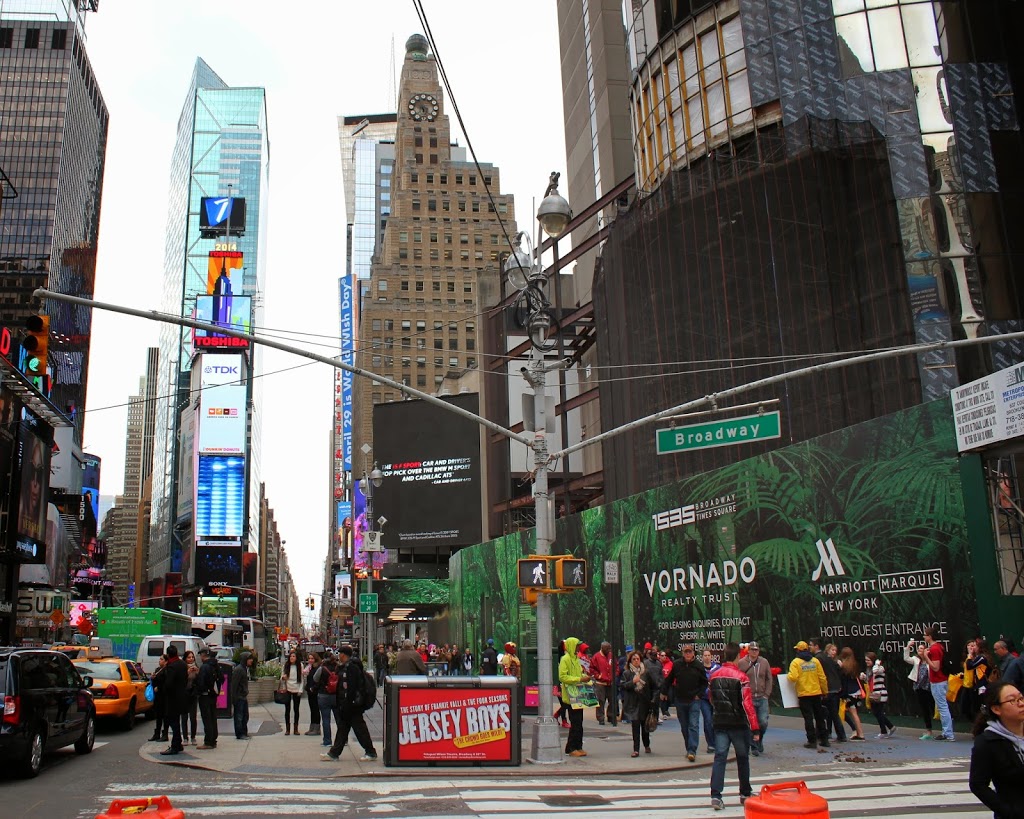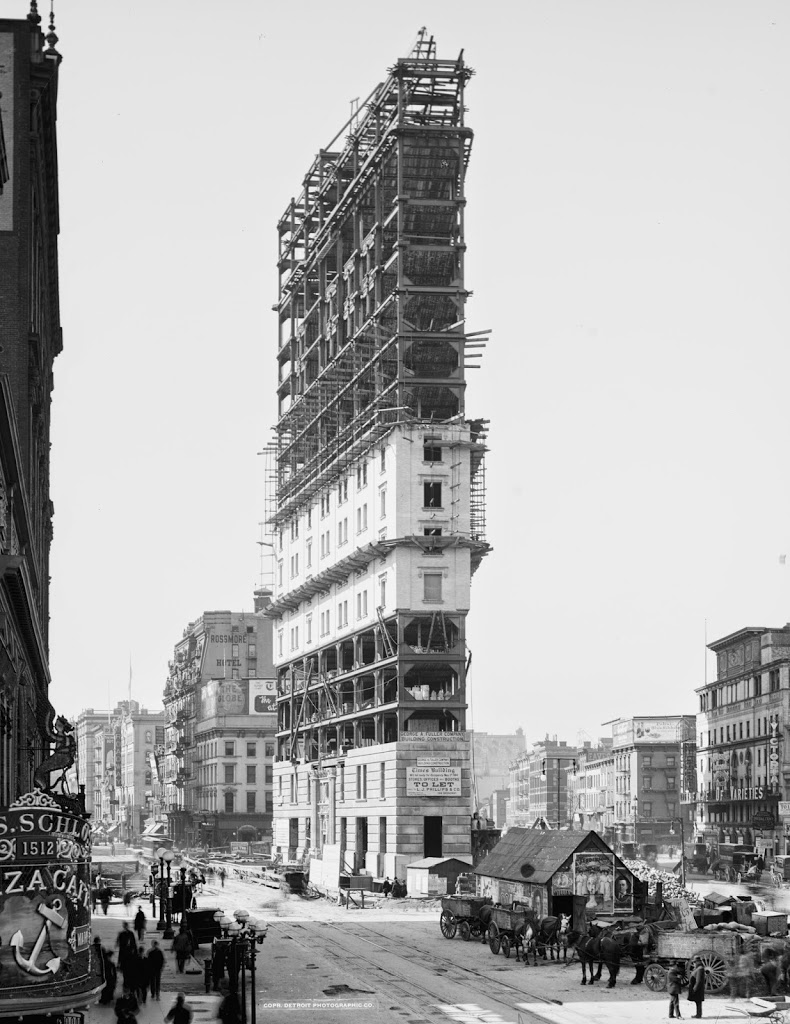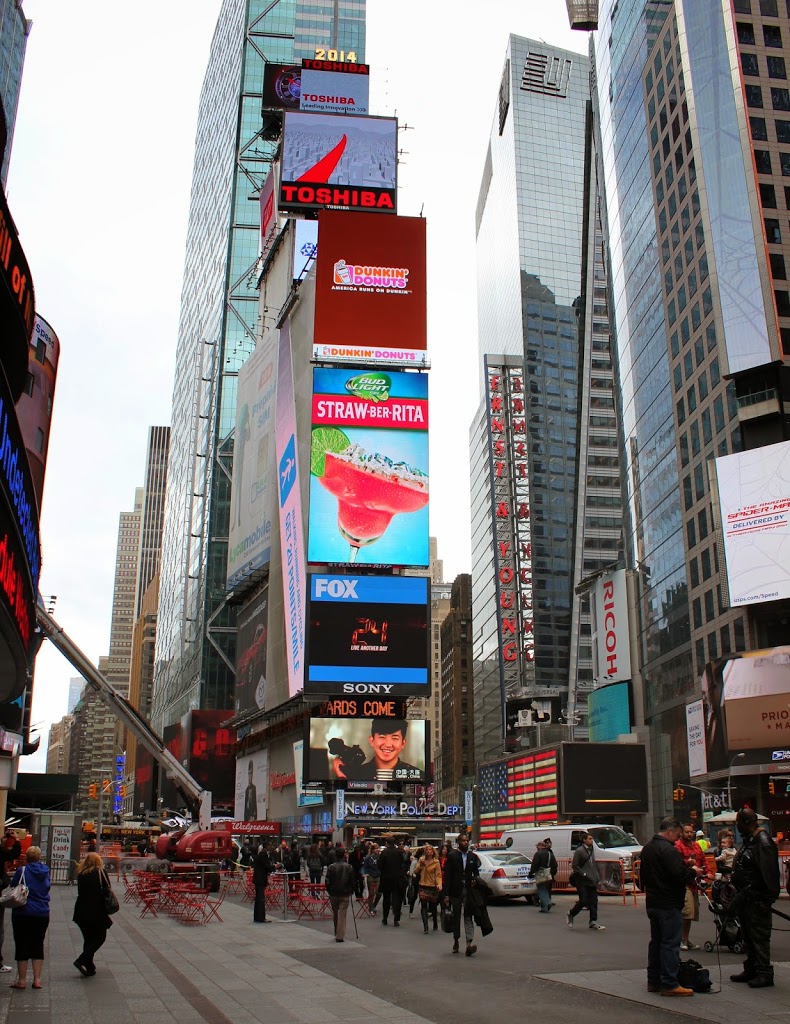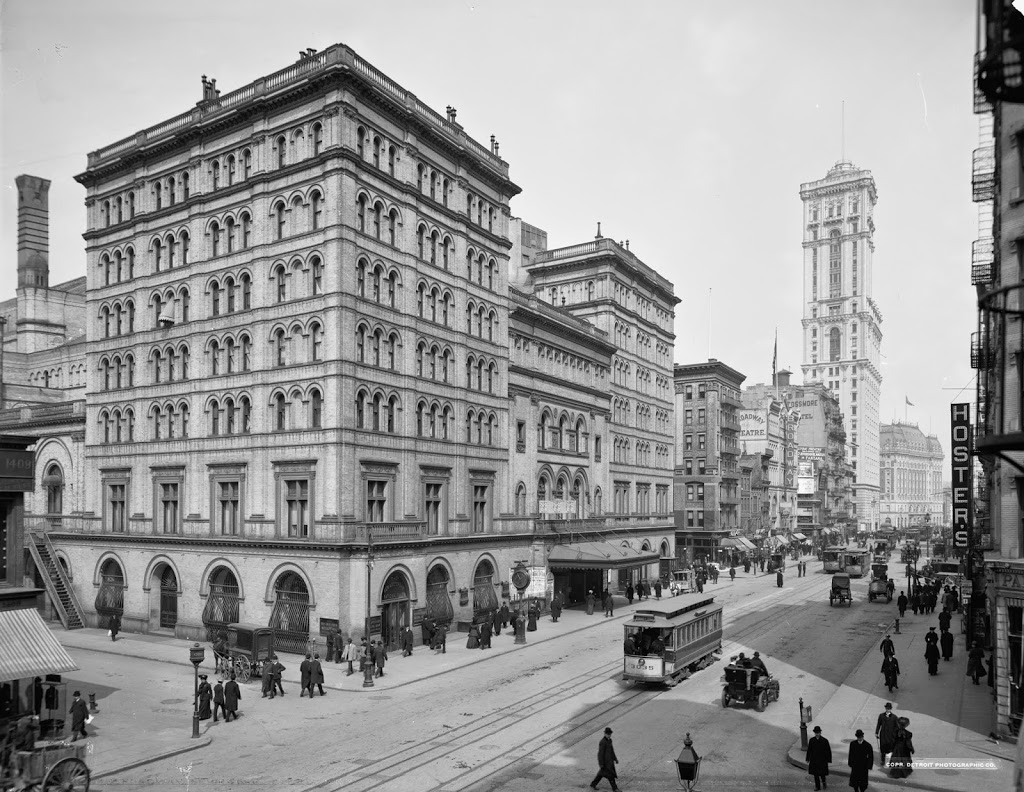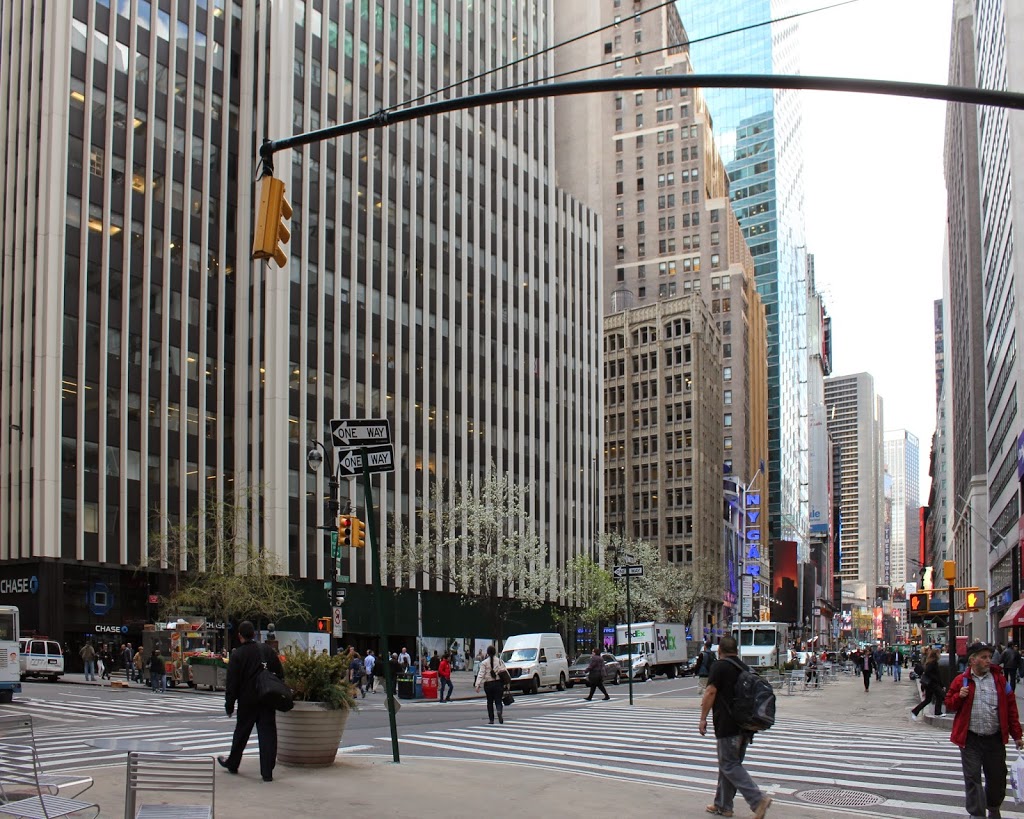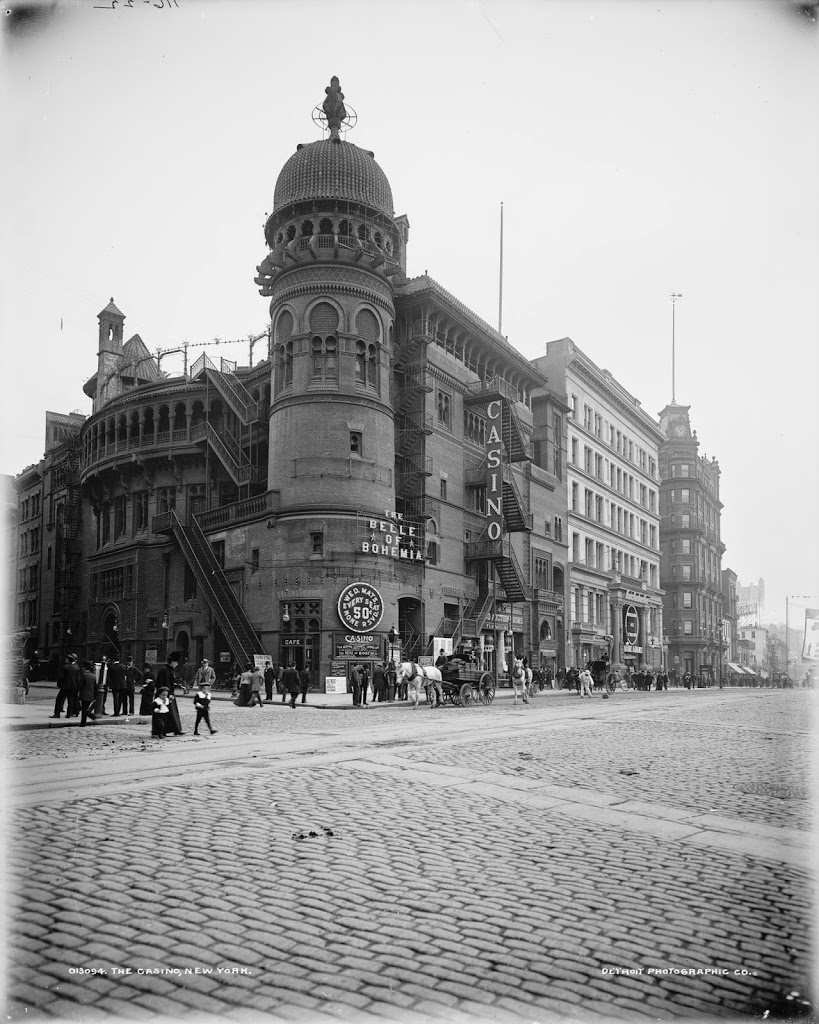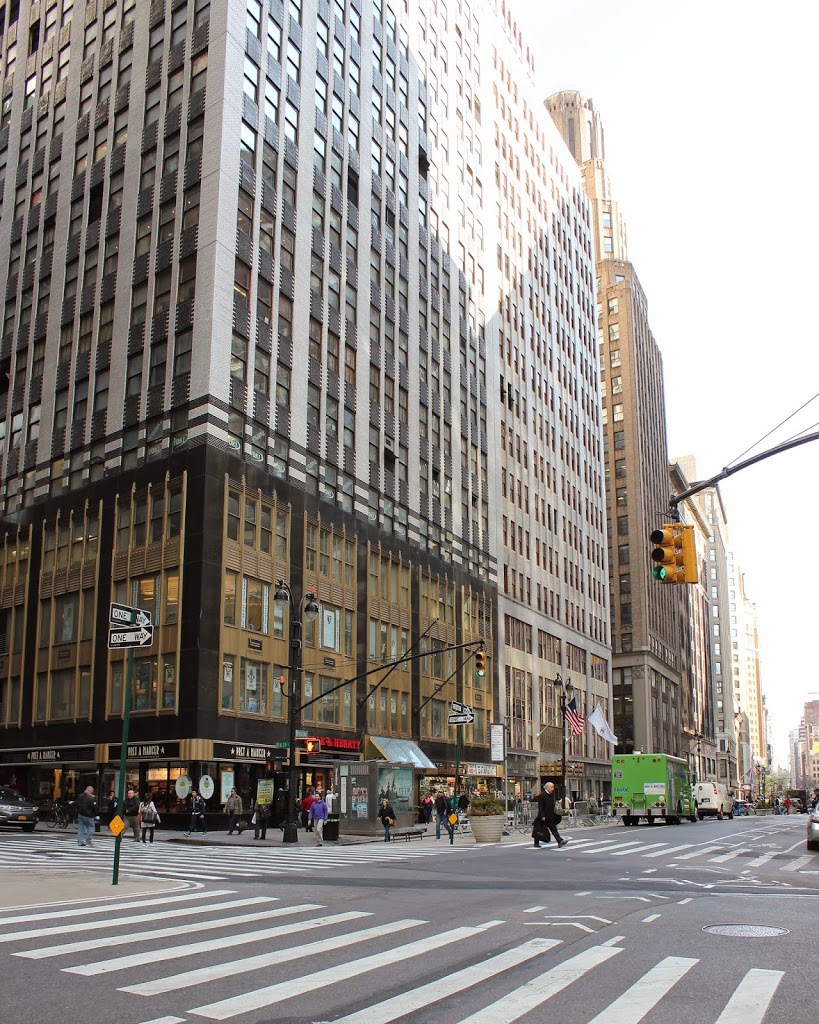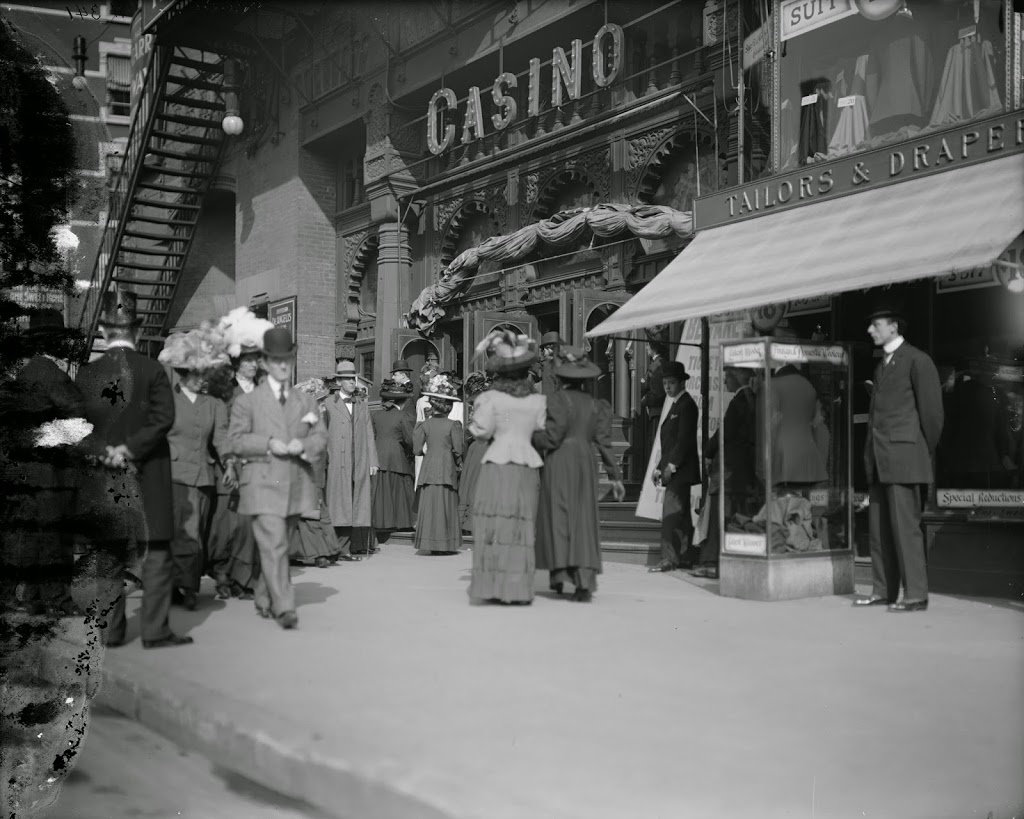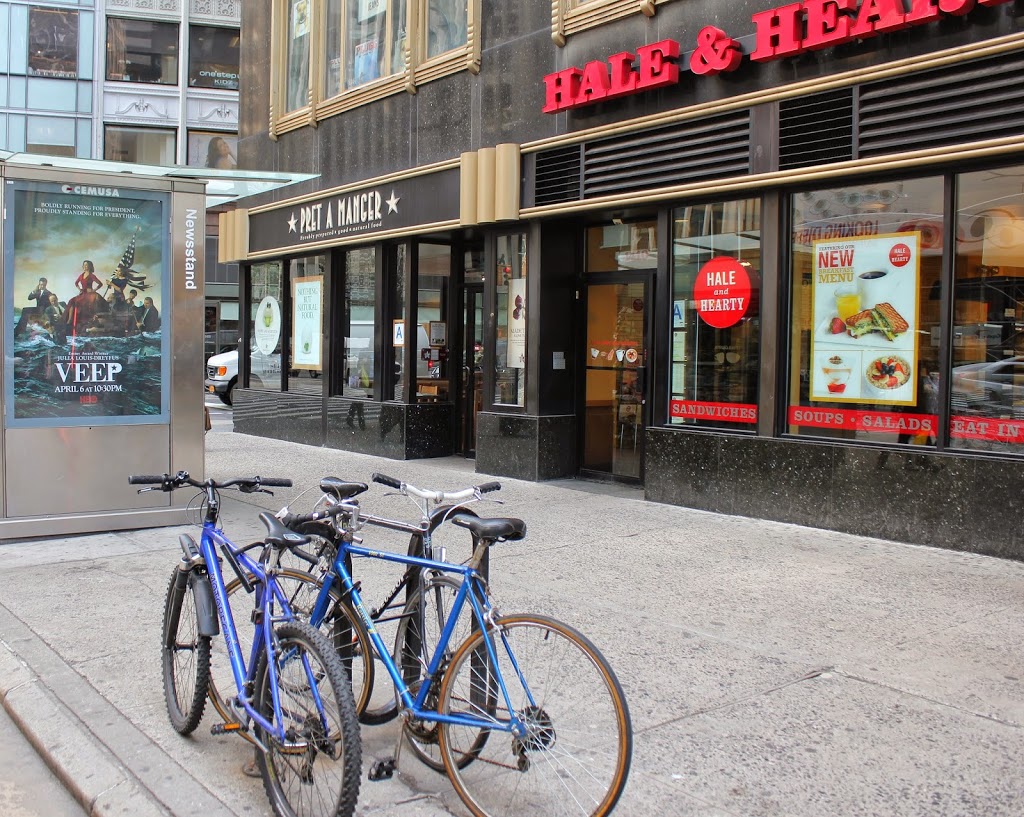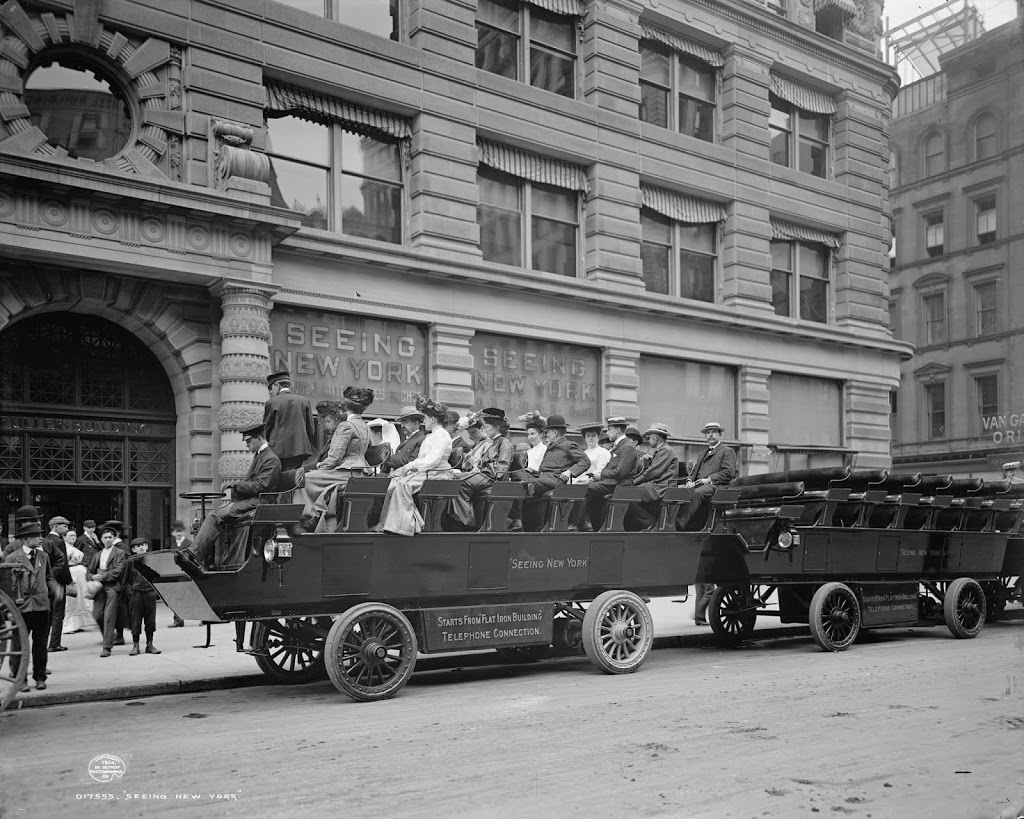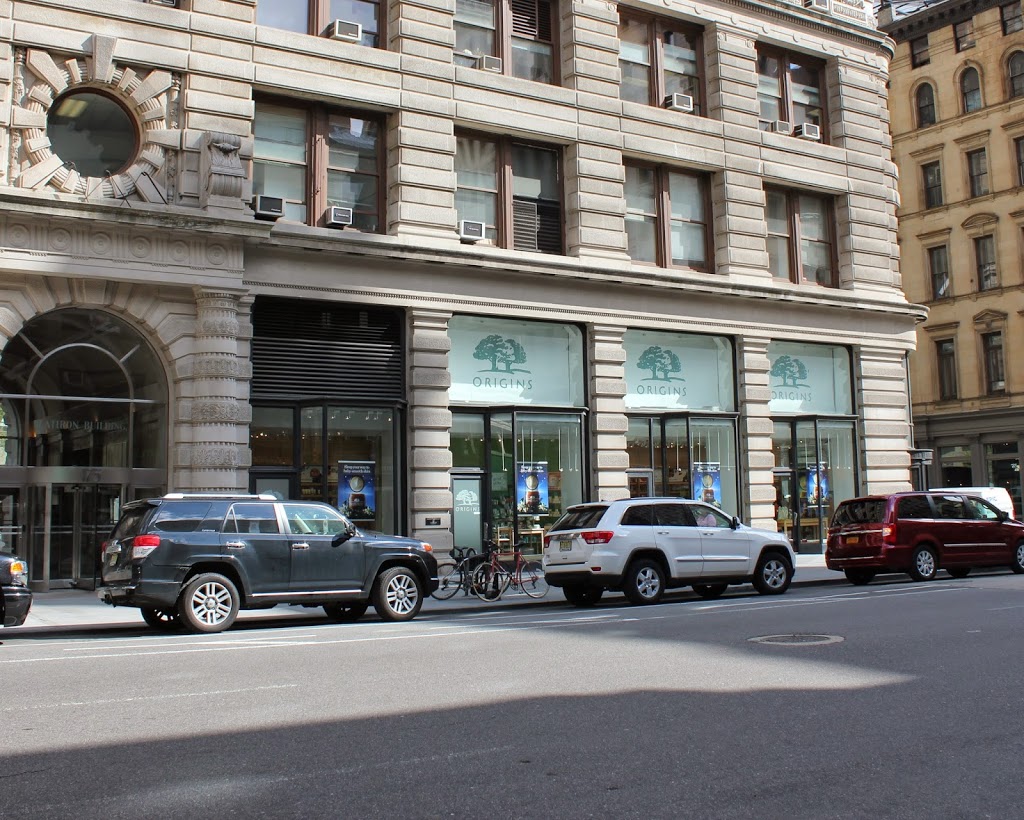Times Square in New York City, around 1905. Image courtesy of the Library of Congress, Detroit Publishing Company Collection.
Times Square in 2014:
The only building that is readily visible in both photos is the New York Times Building, which gives some kind of scale to show the amount of development that has occurred in the past 100+ years. Hiding behind a variety of electronic billboards, the building is still there, and has not changed in height. It’s hard to tell, but in the 2014 photo the top of the building is right around the bottom of the Toshiba sign. In 1905, the building towered over the rest of the square; today, it is barely noticeable among the much taller skyscrapers that now front Times Square.


